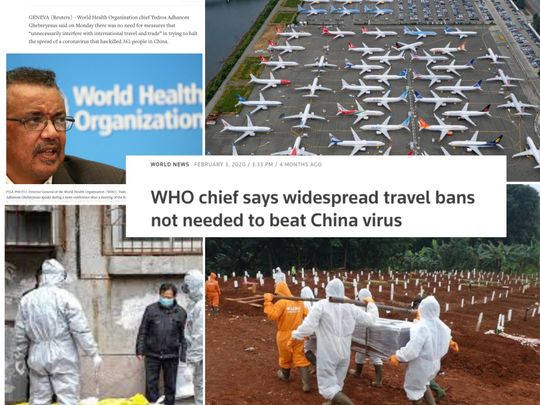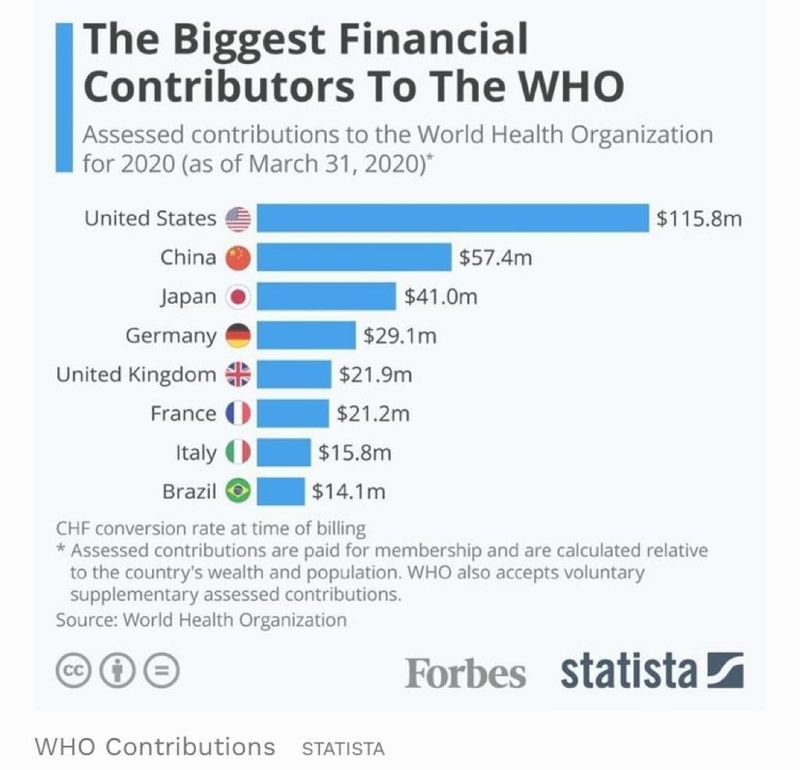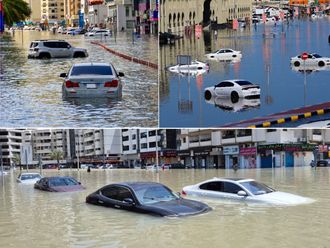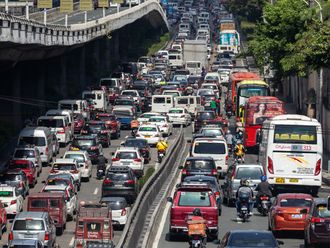
DUBAI: In April 2004, the SARS-CoV virus escaped not once, but twice, from a Chinese lab. Back then, the WHO unabashedly criticised the lab’s safeguards, or the lack of it.
It was reported that a 26-year-old female postgraduate student and a 31-year-old post-doctoral male, who both worked for the Chinese Institute of Virology (CIV) in Beijing, part of China's Center for Disease Control, were infected on separate occasions, WHO spokesman Bob Dietz in Beijing told The Scientist.
The WHO made the twin incidents public almost immediately, unconcerned about Chinese official reaction. At a news conference on April 25, 2004, WHO Western Pacific Regional Director Shigeru Omi openly criticised the lab's safety procedures.
When WHO criticised China, and got full access
Laboratory safety “is a serious issue that has to be addressed,” Omi stressed then. “We have to remain very vigilant…it’s a question of procedures and equipment. Frankly, we are going to go in now a take a very close look,” he said.
In 2004, immediately following the reported leak, the WHO’s panel of international experts were given full access to the lab in question.
“We’ve been told we'll have full access, be able to test all the surfaces, interview people who worked there, and look at documentation to find out what was being done,” Dietz was quoted as saying.
Following the 2004 leak, the lab was shut down. Then 200 staff were placed in isolation in a hotel near another lab in Cham Ping, about 20 kilometers North of Beijing.
Coronavirus: 16 years later
Fast forward 16 years later: In January 2020, at the beginning of the novel coronavirus outbreak, the WHO took China’s narrative that the virus jumped from a seafood market, without bothering to check.
On January 14, 2020, the WHO sent out a tweet stating: “Preliminary investigations conducted by the Chinese authorities have found no clear evidence of human-to-human transmission of the novel #coronavirus (2019-nCoV) identified in #Wuhan, #China"
This, despite the fact that by mid-January, Chinese doctors knew that COVID-19 was already spreading between humans. On January 23, 2020, the WHO “welcomed” efforts by China to “investigate and contain the current outbreak”, though no WHO experts were on the ground to validate any investigation being conducted.
On January 24, a study on 41 patients published in The Lancet by Chinese clinicians disproved the Huanan-Seafood-Wholesale-Market-was-the-origin-of-SARS-CoV-2 narrative.
It took a few more days, on January 28, 2020, when WHO’s international experts were given access to the country, during the visit of Director-General Tedros Adhanom to Chinese President Xi Jinping.

On January 30, a bigger clinical study, done on 99 confirmed coronavirus patients in another hospital in Wuhan, was published, reinforcing the earlier one, and further confirming “evidence of human-to-human transmission.”
That same day the first case of human transmission was confirmed on US mainland. The next day, January 31, 2020, US President Donald Trump shut US borders to China.
The WHO also assailed Trump’s move. The agency’s officials heaped praises upon China’s cooperation and transparency.
It has emerged, according to AP, that while WHO officials profusely thanked the Chinese government for sharing the genetic map of the virus “immediately” (the Shanghai lab that shared the coronavirus DNA sequence on a global virology server on January 11, 2020 was shut the next day), there's a flipside to the story — one of significant delays by China and considerable frustration among WHO officials.
Publicly, the WHO were singing praises. Privately, officials reportedly expressed frustration, even exasperation, over not getting the information they needed to fight the spread of the deadly virus, according to the AP report.
They are aware of serious consequences: On December 30, 2019, Chinese doctor Li Wenliang warned colleagues about the outbreak of an illness resembling SARS, which kicked off a pandemic in 2003.
Instead of heeding the call, Li and colleagues were arrested and warned that anyone spreading “rumors” on social media would be punished.
The hope was that, by praising instead of criticizing, the WHO would receive timely information about the new outbreak from China, where the outbreak started. The buttering up was subtle, coated in niceties.
Niceties over science
For WHO, a change of tune was a calculated tact, one in which accommodation took precedence over good science — with devastating results: over 7 million cases, including 682,800 in the Middle East and 403,000 deaths as of Monday (June 8, 2020).
The events moved like a slow-motion horror flick. For example, on January 22, when WHO reported that human-to-human transmission was already occurring and a preliminary “R0 estimate of 1.4-2.5”, but it declined to declare the outbreak a “public health emergency of international concern”.
On January 31, 2020, a day after the first case of human-to-human transmission was reported in the US mainland, Trump banned travel from China by foreign nationals, alongside declaration by US Secretary of Heath and Human Services Alex Azar of “public health emergency” over the virus outbreak.
It was then, on January 31, 2020 itself, that the WHO declared the coronavirus "a global health emergency”.
The US travel ban did not sit well with the WHO leadership.
Again, WHO sang praises for China, and unleashed a tongue-lashing on other countries. "The main reason for this declaration is not what is happening in China but what is happening in other countries," WHO chief Tedros Adhanom Ghebreyesus said then.
When WHO attacked border closures
On February 2, 2020, as the virus clocked in 361 deaths in China, the WHO assailed the US move, saying the world doesn’t have to take drastic steps such as border closures.
The reason he gave: shutting down air travel is “unnecessary”.
In the words of WHO chief Tedros Adhanom Ghebreyesus, a travel ban would “unnecessarily interfere with international travel and trade”.
By February 28, 2020, all the world’s passenger planes had been grounded — with air traffic down by 95 per cent.
This time, given the shutdown of entire countries, nobody listened to the WHO.
On April 14, 2020, US President Donald Trump announced a move to withdraw all American funding to the WHO.
What went wrong?
What the agency thought was a useful, effective tact, blew up in the face of tens of thousands of deaths and millions of job destroyed, as both the world’s health global economy took devastating hits.
The SARS crisis in 2003-2004 caused 774 deaths and an estimated US$40 billion hit to the global economy. At that time, world health governance mechanisms were deemed inadequate given the rapid global spread of the virus.
Following the SARS pandemic, the International Health Regulations (IHRs) were revised in 2005 under the WHO. These were the changes introduced:
- The WHO is authorised to issue travel warnings without first receiving approval from the relevant government.
- The WHO was also allowed to seek information from non-official sources to augment its disease surveillance capacities.
- It formalised the WHO’s independent disease surveillance capacities
- The WHO was authorised to issue Public Health Emergency of International Concern alerts, based on both official and non-official information.
- The IHRs also mandated transforming domestic health systems and networking them across borders in the fight against infectious disease.
- To carry out the new IHR, the WHO was given an important role — issuing “best practice” guidelines to national and subnational authorities, and monitoring national health systems’ pandemic preparedness.
Areas where WHO failed
Critics of the WHO point to key weaknesses in the global health governance system which led to its subsequent failure during the COVID-19 outbreak:
1. Subservience to major funding states.
Trumps move to defund the WHO is not the first. In the 1970s, the WHO largely defunded by its main funders, the US and Western European countries, after communist member-states pushed through a declaration calling for a “health for all agenda”, demanding health as a human right, drawing attention to deep health inequalities between rich and poor nations.

By the 2000s, donors directly controlled around 80 per cent of the WHO’s budget. Today, the WHO’s total annual budget is around $5.6 billion (compared to the Australian federal health budget for 2019–20 at $120 billion).
With limited budget and capacity, the WHO leadership is forced to be highly responsive to its main funding states, thus jeopardising its independence, said experts.
2. Ill-fitted for its central role in disease surveillance and response coordination.
WHO experts also assumed that infectious diseases are likely to emerge in developing countries — due to their poor sanitation and governance capacities — then spread around the globe. Developing countries, given limited resourced to help build up their domestic health systems, were subjected to ongoing surveillance by the WHO and developed countries.
Developed countries only moved in with funding to protect their own population. When an outbreak of infectious disease occurs, developed countries provided funding and intervened temporarily to address the immediate problem.
When the outbreak is brought under control, the funding dies up. Such intermittent interventions — in the case of Ebola, SARS MERS and Zika — did little to help build up primary health capacity in their recipient states, and countries were largely supposed to use their own resources towards pandemic preparedness.
These factors combined to create an epic fail of global health governance exposed by COVID-19. But quite apart from previous assumptions, the pandemic did not emerge in a developing country, but in China.
The rest is history. But the numbers left by COVID-19 will be felt by tne tire world for a while.
The WHO is a specialised agency of the United Nations responsible for international public health. The WHO Constitution, which establishes the agency's governing structure and principles, states its main objective as "the attainment by all peoples of the highest possible level of health.”
Cost of COVID-19
Early estimates point to $3.5 trillion in economic output lost to pandemic, according to Statista. By the end of February, the pandemic had already wiped out $6 trillion off world stocks.
The UN's mid-year report, meanwhile, said the novel coronavirus is expected to slash global economic output by nearly $8.5 trillion over the next two years, wiping out nearly all gains of the last four years.
By comparison, the SARS crisis in 2003-2004 caused 774 deaths and an estimated $40 billion hit to the global economy. On the other hand, the Gulf War had a $76 billion price tage; the Vietnam War, $500 billion; the Korean War, $336 billion; and World War II, almost $3 trillion, according to an estimate made by Chris Hedges, in his book What Every Person Should Know About War.
In April, the US Federal government was reportedly on its way to spending nearly $4 trillion more than revenue in 2020, and that up to 20% of American could be rendered jobless.
It's been six months since the first SARS-CoV-2 infections were reported. The world, gingerly waiting for a vaccine, is just coming out of lockdowns. And most people are unsure about what's going to happen next.
As for the WHO, it may have to move a mountain to mend its credibility.








